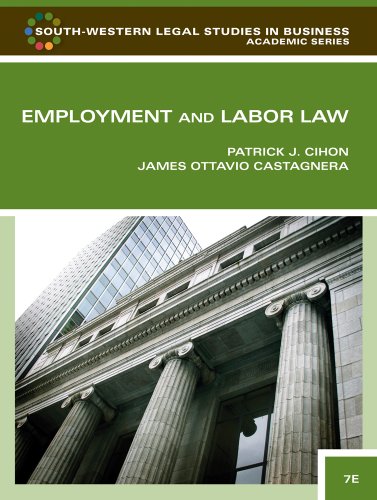The plaintiff in this case was employed by United Engineers and Constructors at its chemical weapons incinerator
Question:
The plaintiff in this case was employed by United Engineers and Constructors at its chemical weapons incinerator on the Johnston Atoll in the South Pacific.
Due to the types of weapons handled at the facility, the court observed, “the working conditions … are probably as dangerous as any undertaken in the world.” Plaintiff had previously been employed at the Pine Bluff Arsenal in Arkansas, where he had made more than 1,000 “toxic entries”—that is, entries into a contaminated area of a plant, requiring protective clothing and other precautions. Upon his arrival at the atoll, he concluded that the company’s managers and his co-workers failed to appreciate the risks they were running. In particular, he concluded that the basic training and the safety equipment were both inadequate. Consequently, he began complaining.
His complaints were vindicated by the subsequent issuance of two “serious” citations by OSHA following the agency’s inspection of the facility in reaction to plaintiff’s complaints. The citations related to unapproved respirators and the standbyteam’s use of improper equipment. (A “serious”
violation means that the hazard poses a “substantial probability of death or serious physical harm.”)
Disputes between plaintiff and his superiors continued. The situation came to a climax when plaintiff refused to work in a toxic area because the company had failed to provide him with a new set of corrective lenses for his face mask. Plaintiff was discharged for insubordination. He again filed an OSH Act complaint, and the agency’s regional investigator made an initial finding that the complaint had merit. However, after several local attempts to amicably resolve the dispute, the case was forwarded to the OSHA regional solicitor in San Francisco with a recommendation that the case be adjudicated. However, the regional solicitor decided to dismiss the case due to a possible jurisdictional dispute with the U.S. Army, which conducted its own inspection/investigation but failed to act. Instead, the army turned the file over to the Department of Labor, where OSHA gave the case one final review but still refused to take adjudicative action.
Based on these facts, what are the policy considerations in favor and against allowing the plaintiff to pursue a lawsuit against OSHA, seeking a writ of mandamus from a federal judge, and requiring OSHA to adjudicate plaintiff’s retaliation claim against the employer? See Wood v. Department of Labor [275 F.3d 107 (D.C. Cir. 2001)].
Step by Step Answer:

Employment And Labor Law
ISBN: 9781439037270
7th Edition
Authors: Patrick J. Cihon , James Ottavio Castagnera





